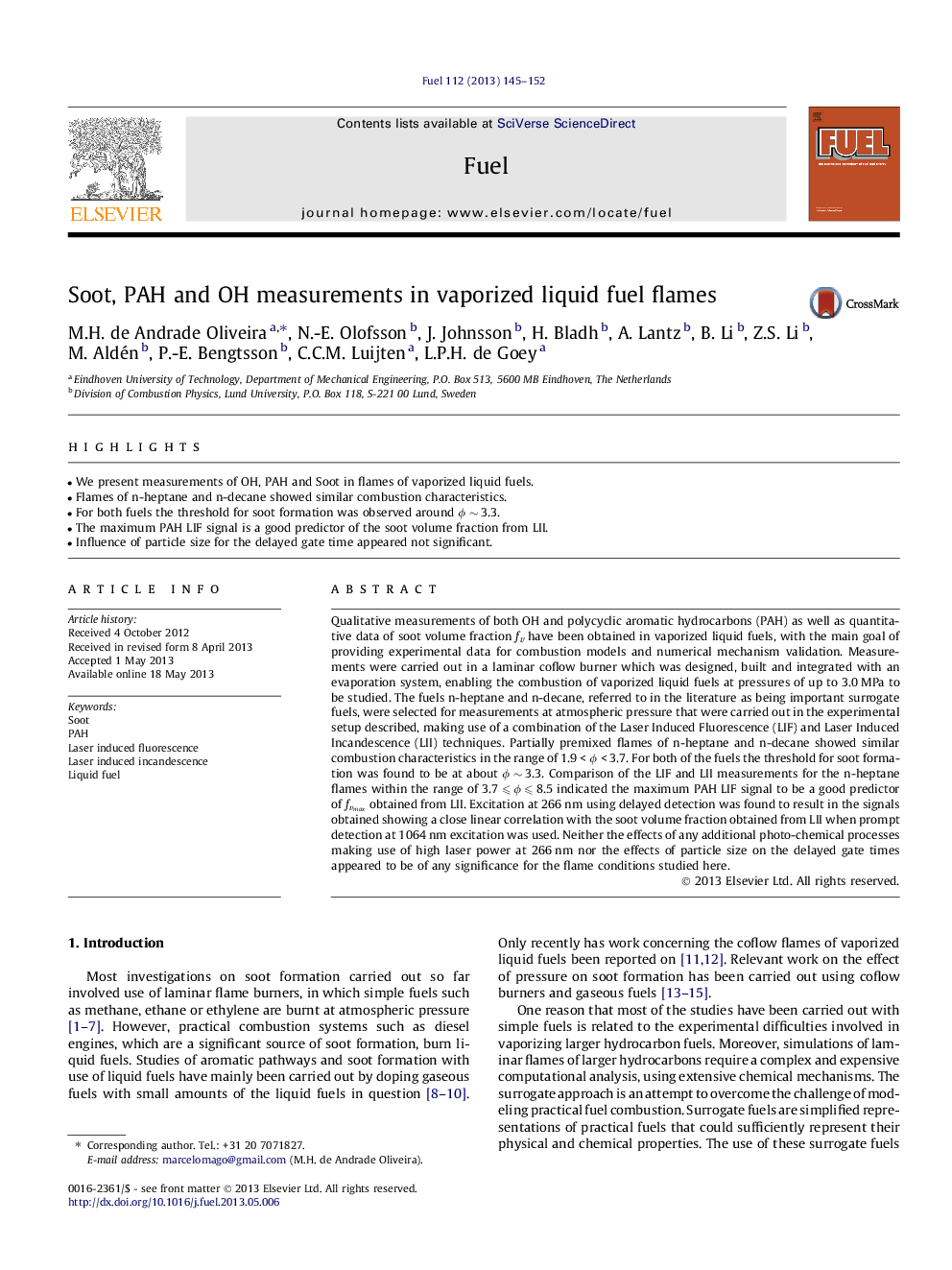| Article ID | Journal | Published Year | Pages | File Type |
|---|---|---|---|---|
| 6640077 | Fuel | 2013 | 8 Pages |
Abstract
Qualitative measurements of both OH and polycyclic aromatic hydrocarbons (PAH) as well as quantitative data of soot volume fraction fv have been obtained in vaporized liquid fuels, with the main goal of providing experimental data for combustion models and numerical mechanism validation. Measurements were carried out in a laminar coflow burner which was designed, built and integrated with an evaporation system, enabling the combustion of vaporized liquid fuels at pressures of up to 3.0 MPa to be studied. The fuels n-heptane and n-decane, referred to in the literature as being important surrogate fuels, were selected for measurements at atmospheric pressure that were carried out in the experimental setup described, making use of a combination of the Laser Induced Fluorescence (LIF) and Laser Induced Incandescence (LII) techniques. Partially premixed flames of n-heptane and n-decane showed similar combustion characteristics in the range of 1.9 < Ï < 3.7. For both of the fuels the threshold for soot formation was found to be at about Ï â¼Â 3.3. Comparison of the LIF and LII measurements for the n-heptane flames within the range of 3.7 ⩽ Ï ⩽ 8.5 indicated the maximum PAH LIF signal to be a good predictor of fvmax obtained from LII. Excitation at 266 nm using delayed detection was found to result in the signals obtained showing a close linear correlation with the soot volume fraction obtained from LII when prompt detection at 1064 nm excitation was used. Neither the effects of any additional photo-chemical processes making use of high laser power at 266 nm nor the effects of particle size on the delayed gate times appeared to be of any significance for the flame conditions studied here.
Related Topics
Physical Sciences and Engineering
Chemical Engineering
Chemical Engineering (General)
Authors
M.H. de Andrade Oliveira, N.-E. Olofsson, J. Johnsson, H. Bladh, A. Lantz, B. Li, Z.S. Li, M. Aldén, P.-E. Bengtsson, C.C.M. Luijten, L.P.H. de Goey,
